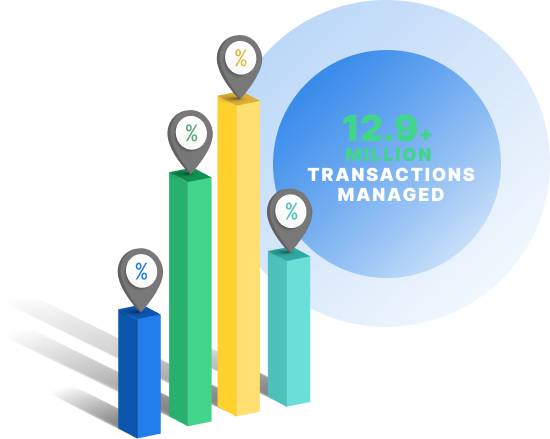-
 Published: Feb 8, 2023
Published: Feb 8, 2023
-
 7 min. read
7 min. read
-
 Sina Mchunu
Sina Mchunu Research & Tech Content Writer
Research & Tech Content Writer
- Sina is a marketing expert who specializes in SEO, AI, and digital marketing content. With over five years of experience, she’s written hundreds of pieces, spanning a variety of topics and industry niches. She loves combining her strong eye for detail and passion for storytelling in her work. You’ll find her fruit picking or horse riding at the local farm when she’s not writing.
As a sales or marketing manager, it’s essential to know what your buyers want so you can tailor an effective sales strategy to their preferences and biases and not lose a deal.
However, customers’ decisions to purchase are driven by a wide range of emotions and practical considerations. So, how do you know your customer’s buying motives?
Read on to find out. In this article, we’ll explain what buyer motives are, define different categories of buying motives, and list eight standard buyer motives to consider when developing your sales and marketing strategy.
Here’s a rundown of what we’ll cover:
- What are buyer motives?
- 3 primary buying motive categories
- 8 common buyer motives to consider for your business
Before we get started, join our community of over 200,000 marketers and get insights on how to run effective digital marketing campaigns.
Don’t miss our Marketing Manager Insider emails!
Join 200,000 smart marketers and get the month’s hottest marketing news and insights delivered straight to your inbox!
Enter your email below:
Inline Subscription Form – CTA 72
“*” indicates required fields
(Don’t worry, we’ll never share your information!)

What are buyer motives?
Buyer motives are the emotional and intellectual factors influencing a consumer’s decision to buy a product or service. These factors include cost, accessibility, emotional value, societal pressure, and quality.
3 primary buying motive categories
An individual’s decision to purchase an offering is based on their rationalizations, emotions, and gut reactions. The following are the three most common buyer motivation categories:
- Conscious vs. Dormant Buying Motives
- Rational vs. Emotional Buying Motives
- Product vs. Patronage Buying Motives
Conscious vs. dormant buying motives
Conscious buying motives are the buyer’s apparent motivations for making a purchase. For example, a buyer may have conscious motives, such as wanting to save money or needing a particular product for an upcoming event. They know what’s driving them to purchase a product or service.
On the other hand, dormant buying motives only influence the buyer’s purchasing decision once your sales and marketing representatives actively persuade them to take action. Dormant purchasing reasons appeal to a desire in the buyer that they didn’t know they had before.
Rational vs. emotional buying motives
Emotional buyer motives drive consumers to make purchases based on their desire for sensations of safety and well-being, status, fascination, respect, adoration, and so on. It’s also driven by their desire to be admired, loved, and regarded as beautiful.
In contrast, rational buying motives drive the buying decisions of customers seeking fulfilment through purchases made for logical reasons such as cost, statistics, or research. Consumers also use rational motives to purchase items that meet a need or solve a problem.
Product vs. patronage buying motives
Product buying motives are the product’s physical and psychological characteristics — style, dimensions, cost, and quality — influencing a customer’s purchase decision.
A patronage motivation encourages consumers to support a particular business when making a purchasing decision. This buying motive fits the needs of customers who would choose to buy from familiar vendors.
Partner with a team of ecommerce masters!
WebFX campaigns have delivered more than 14,936,451 ecommerce transactions in the last 5 years
Read the Case Studies

8 common buyer motives to consider for your business
Here are eight common buyer motives your sales team should know:
1. Financial returns
Many potential customers, especially in the business-to-business (B2B) market, are investing capital to generate revenue. Their primary goal in doing business with you is to find ways to increase efficiency with your product or service. Some possible goals may be to increase productivity in the workplace, increase income, or reduce costs.
When trying to close a deal with a client that has this buying motivation, it’s crucial to establish credibility and provide proof of success. Do not rely on narration — instead, provide examples. Use examples of companies like theirs or clients who have benefited financially from your solution.
Customers who are primarily concerned with cost savings have more to lose than those who are more concerned with being “in the know” about the latest trend.
Therefore, you must assure customers that their money is well spent on your product or service. Assure them of the reliability of your offerings and demonstrate the benefits they will reap from working with you.
WebFX specializes in B2B client success.
Wheeler Machinery Co., saw 82% higher average time on site after partnering with WebFX for SEO, CRO, web design and development, and website content services.
See Case Study

2. Health and well-being
Many buyers are thinking about how to safeguard their health better. In surveys, over 45% of participants reported they would pay extra for an enhanced focus on health and safety. The ability to convince people that your product or service will improve or extend their quality of life will pique their interest, at the very least.
The secret to selling based on health is to demonstrate your offering’s results convincingly. To convince potential buyers, you must prove that your product or service will improve their lives in some obvious way. If you show that your offering solves a pressing medical problem, you’ll have a good chance of making the sale.
WebFX helps clients in the healthcare industry grow their practices.
“My practice has grown quickly and improved our accessibility to those we serve or hope to serve within our community. WebFX is directly responsible for our growth and the fact that we have more than doubled our revenue in six months.”
— Merrimack Valley Psychological Associates


3. Need
Some consumers may feel compelled to purchase out of necessity. Prospects are more likely to be interested in what you offer if they have problems that your solution can address.
Profiting from a customer’s wants and requirements usually depends on how well you’ve prepared yourself for any issues arising from your offering’s intended use.
However, when you give someone what they want, they often realize they didn’t know they wanted it. And this isn’t just true of wants, but also of needs. Sometimes, you have to create a need for your prospects.
Some customers come to the table with a crystal clear concept of the issues they’re trying to solve, your solution, and how it can help them. However, some people may require more reasoning. You have to get them thinking about a problem, show them how it relates to them, and then demonstrate why you’re the best person to fix it.
4. Self-growth
Some shoppers make purchases motivated by hopes for personal growth. They’re hoping to make positive changes, so they’re using that money. In most cases, people don’t buy things like gym memberships and diet plan subscriptions out of panic or for entertainment, but rather, out of a genuine desire to better themselves.
To close a deal with an aspirational consumer, you need to highlight their potential success if they follow through with the purchase. For instance, if you offer a home workout app subscription, ensure your potential customers know how your app can benefit their body goals by highlighting their accomplishments and unlocking more advanced exercises.
5. Fear
Many businesses use overt or covert fear techniques in their marketing and advertising efforts to generate a sense of urgency about their products and services. Despite the potential moral hazard, playing on this buyer motive can be successful.
The steps involved are the same as the first item on this list. You might use this method to bring up concerns your prospect could be disregarding or to draw attention to a requirement they are overlooking.
6. Acceptance
While acceptance might be seen as a result of “fear of losing out” among consumers, the term refers to the phenomenon in which potential customers show an interest in a product or service because they observe that their peers are also purchasing it.
That’s why social approval is usually the driving force behind consumer trends. Some offerings quickly gain popularity and a sizable following. Affluent consumers want to appear trendy and in the know, so they make it a point to buy into the trend.

We’ve built out a virtual file cabinet with 35+ FREE marketing PDFs — just for you.
Explore Our Free Marketing Guides7. Impulse
In many cases, consumers pay little consideration to their purchases. Everyone will inevitably admit to succumbing to this drive occasionally. Many shoppers give in to the excitement of the moment and purchase for no other reason than to do so.
Consumers’ propensity to make impulsive purchases is based on their excitement. Therefore, manipulating such feelings is key to encouraging them to purchase. It’s possible to encourage impulse buys by creating a sense of urgency.
Sometimes all it takes to purchase on impulse is a great price. Flash sales and other forms of promotional pricing are great examples of this.
8. Pleasure
Customers don’t always buy the things they need. There are occasions when people waste money on non-essentials. Humans are naturally inclined to indulge themselves every once in a while.
This tendency often leads people to make purchases driven more by want than necessity. This buying motive is appropriate only when selling something that can be categorized as a luxury item.
Time to Level Up Your Sales
Our long list of services helps you grow every aspect of your business with marketing strategies that are proven to increase bottom-line metrics like revenue and conversions.
In the past 5 years, we’ve managed more than 14.9 MILLION transactions across our client base.

Need help segmenting your customers according to their unique buying motivations?
Understanding your target market’s purchasing decisions can improve your marketing strategies, attract more customers, and boost your bottom line.
With over 28 years of experience, WebFX can help you increase sales. Our team of over 500 digital marketing experts can tailor your campaign to your target demographic.
Contact us today or call 888-601-5359 to speak with a strategist about how we can help you immediately put segmentation to work, enhancing your strategy.
-
 Sina is a marketing expert who specializes in SEO, AI, and digital marketing content. With over five years of experience, she’s written hundreds of pieces, spanning a variety of topics and industry niches. She loves combining her strong eye for detail and passion for storytelling in her work. You’ll find her fruit picking or horse riding at the local farm when she’s not writing.
Sina is a marketing expert who specializes in SEO, AI, and digital marketing content. With over five years of experience, she’s written hundreds of pieces, spanning a variety of topics and industry niches. She loves combining her strong eye for detail and passion for storytelling in her work. You’ll find her fruit picking or horse riding at the local farm when she’s not writing. -

WebFX is a full-service marketing agency with 1,100+ client reviews and a 4.9-star rating on Clutch! Find out how our expert team and revenue-accelerating tech can drive results for you! Learn more
Try our free Marketing Calculator
Craft a tailored online marketing strategy! Utilize our free Internet marketing calculator for a custom plan based on your location, reach, timeframe, and budget.
Plan Your Marketing Budget
Table of Contents
- What Are Buyer Motives?
- 3 Primary Buying Motive Categories
- Conscious vs. Dormant Buying Motives
- Rational vs. Emotional Buying Motives
- Product vs. Patronage Buying Motives
- 8 Common Buyer Motives to Consider for Your Business
- 1. Financial Returns
- 2. Health and Well-being
- 3. Need
- 4. Self-growth
- 5. Fear
- 6. Acceptance
- 7. Impulse
- 8. Pleasure
- Need Help Segmenting Your Customers According to Their Unique Buying Motivations?

Maximize Your Marketing ROI
Claim your free eBook packed with proven strategies to boost your marketing efforts.
Get the GuideTry our free Marketing Calculator
Craft a tailored online marketing strategy! Utilize our free Internet marketing calculator for a custom plan based on your location, reach, timeframe, and budget.
Plan Your Marketing Budget





